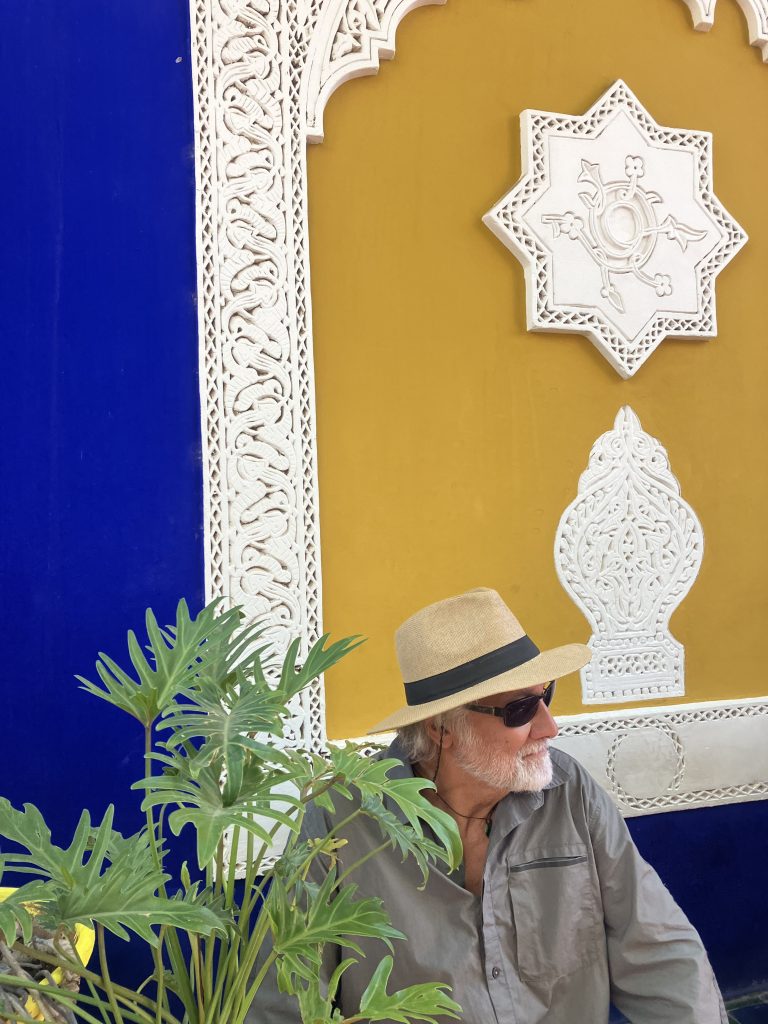
It was time to explore inland a bit, so we hopped a train and headed for Marrakech. Getting off the train, we immediately noticed the DRY heat….it turns out it was 100 degrees and I didn’t even realize it without the humidity.
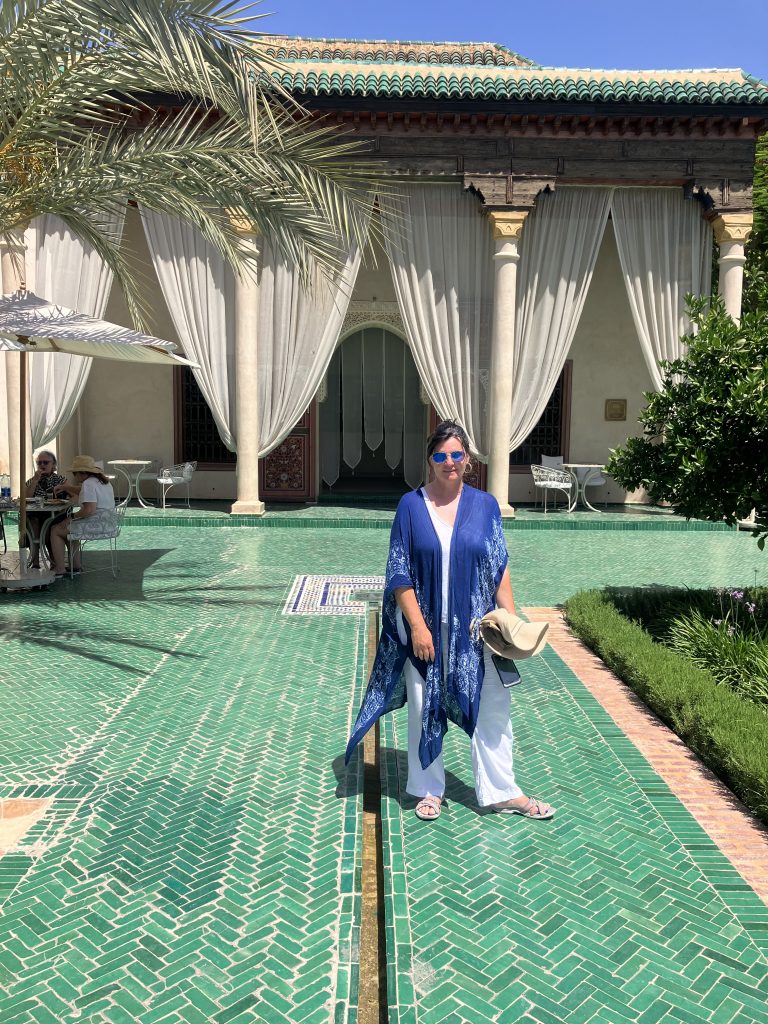
After lunch at a local restaurant, we headed to the riad (hotel around a garden) to drop our bags off, and begin to explore. Of course we found a rug store right away, and fell in love. (We managed to resist for another day and visit more rug stores, but we still came back to the first store, to the first rug, and bought it over mint tea).
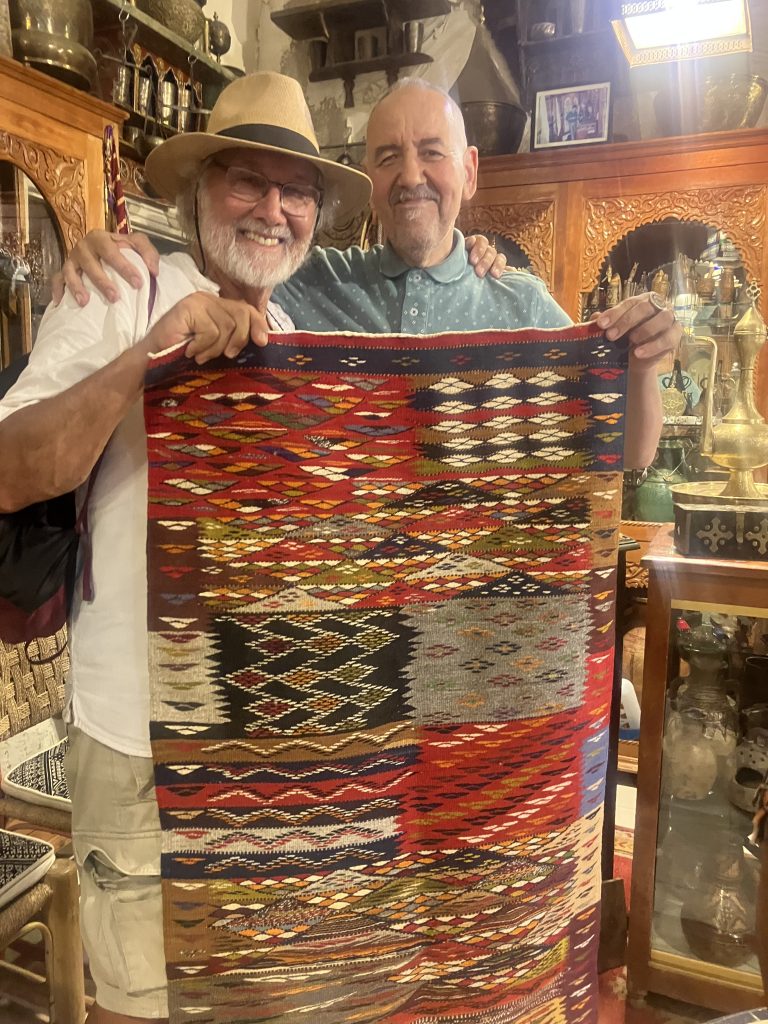
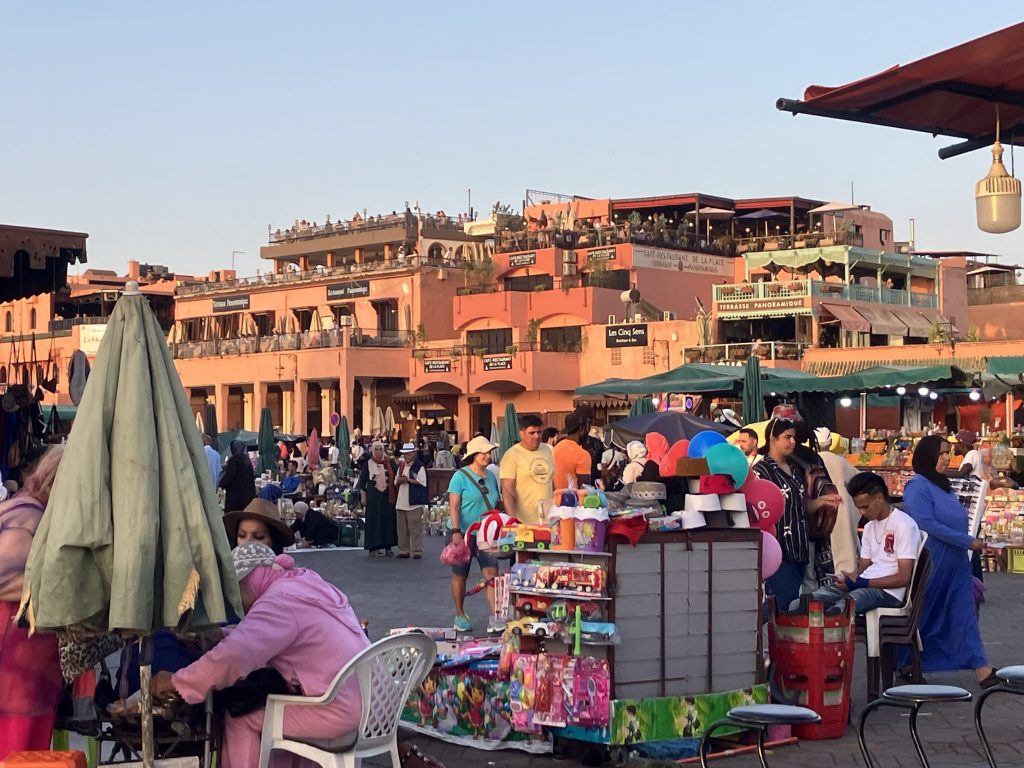
Aside from shopping and wandering through the Medina (old town) and souks (markets) and gawking at more cute cats (really? In Morocco?), we explored the Saadian tombs, a historical royal necropolis built in the 1500’s. Mobbed by tourists, the architecture was amazing. You can’t take it with you, but they made an extraordinary attempt on their way out!
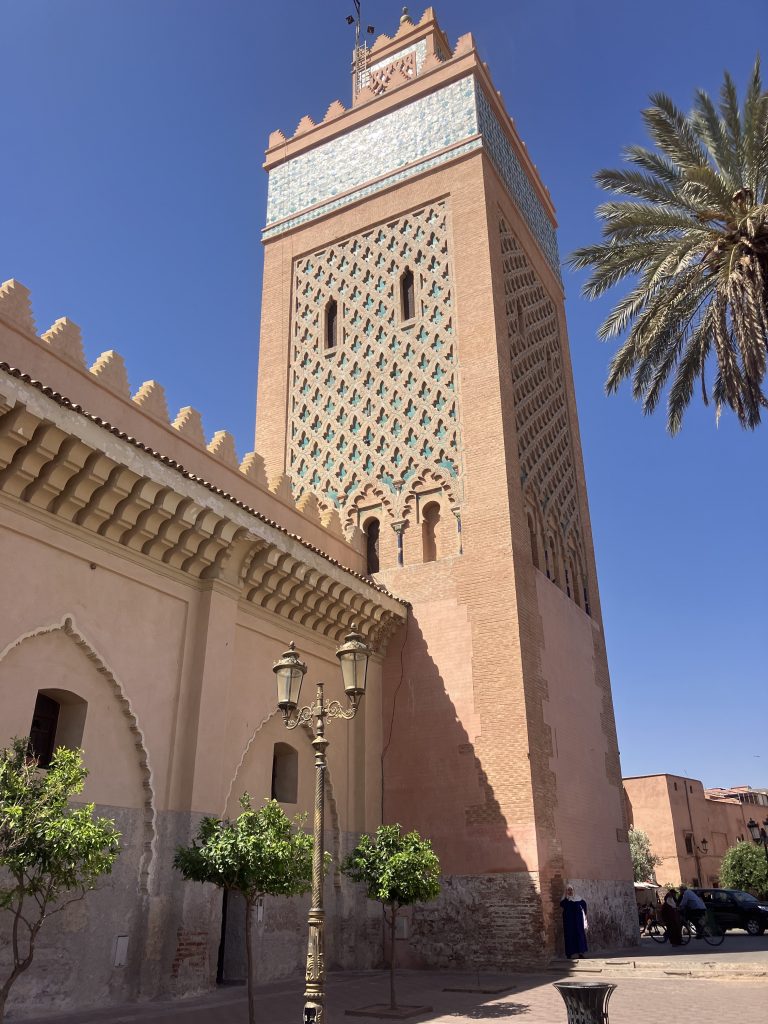
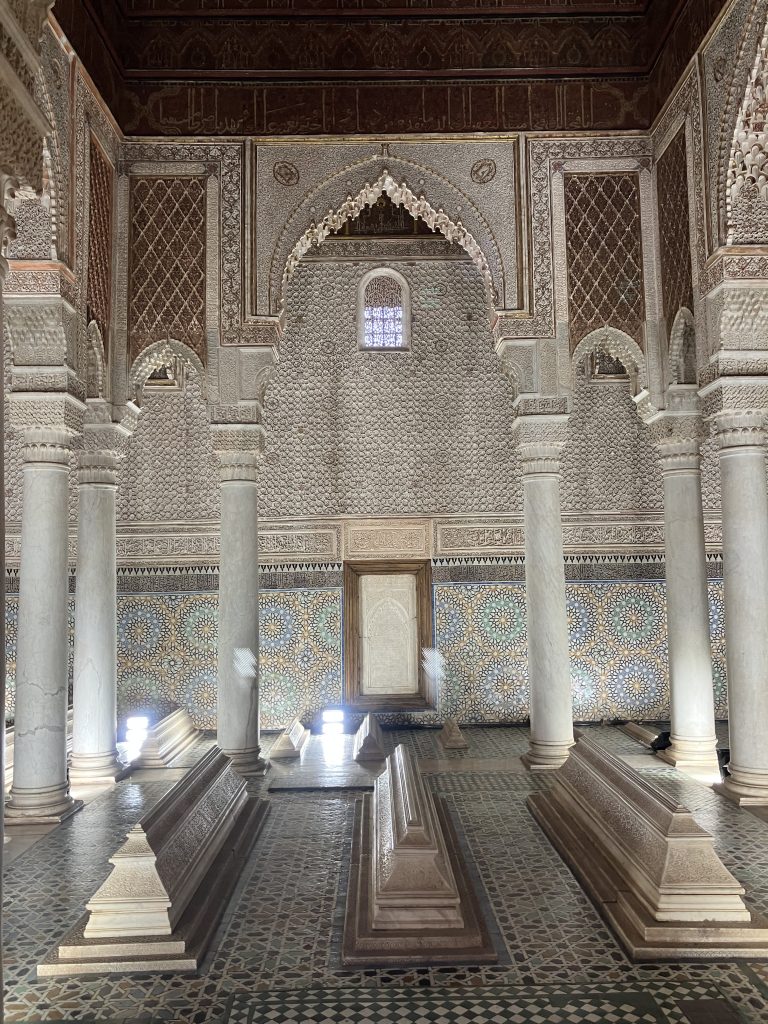
After the tombs we moved on to the Bahia Palace, which was built in the 19th century. Not nearly as ancient as the other places we’ve visited, it was still beautiful to tour and see how royalty lived and conducted matters of state. Sadly, when one of the last sultans died (early 20th century), the palace gates were locked, and those inside looted and absolutely trashed the place. Much restoration was done when the building was later turned over to the state.
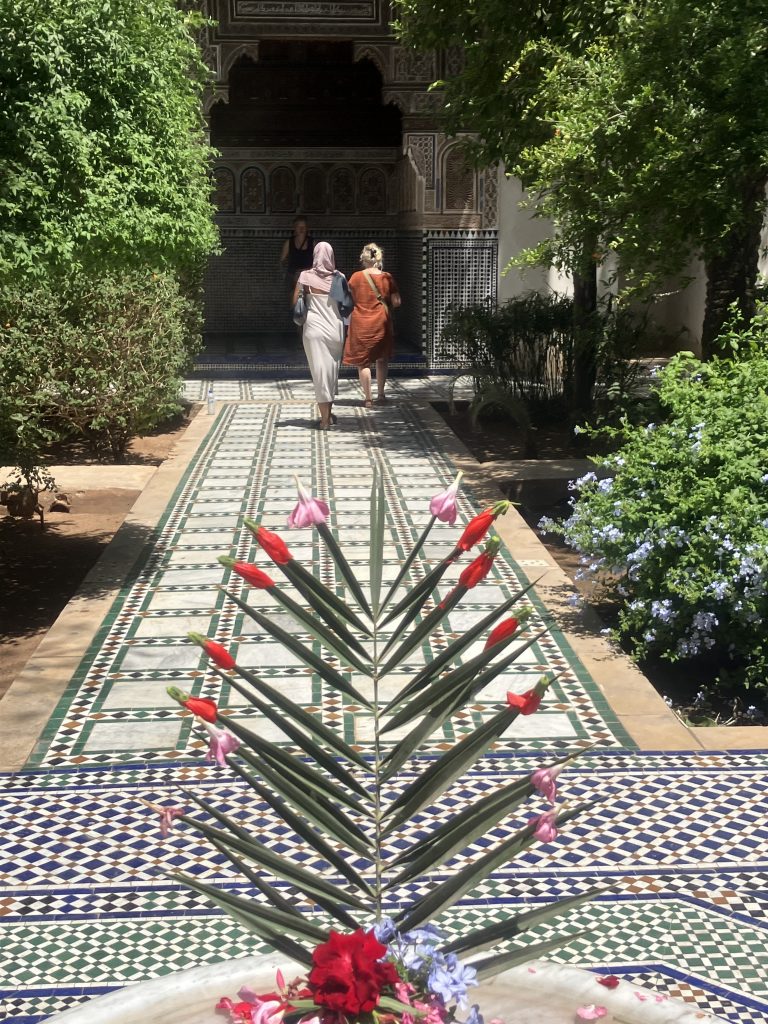
For lunch we headed back into the Medina to Le Jardin Secret (the secret garden). It was once a riad owned by one of the wealthy of Marrakech, which meant it had access to water that had been piped down from the Atlas Mountains. Man-made ‘khettaras’, a network of underground tunnels, funneled the water through their homes and grounds.
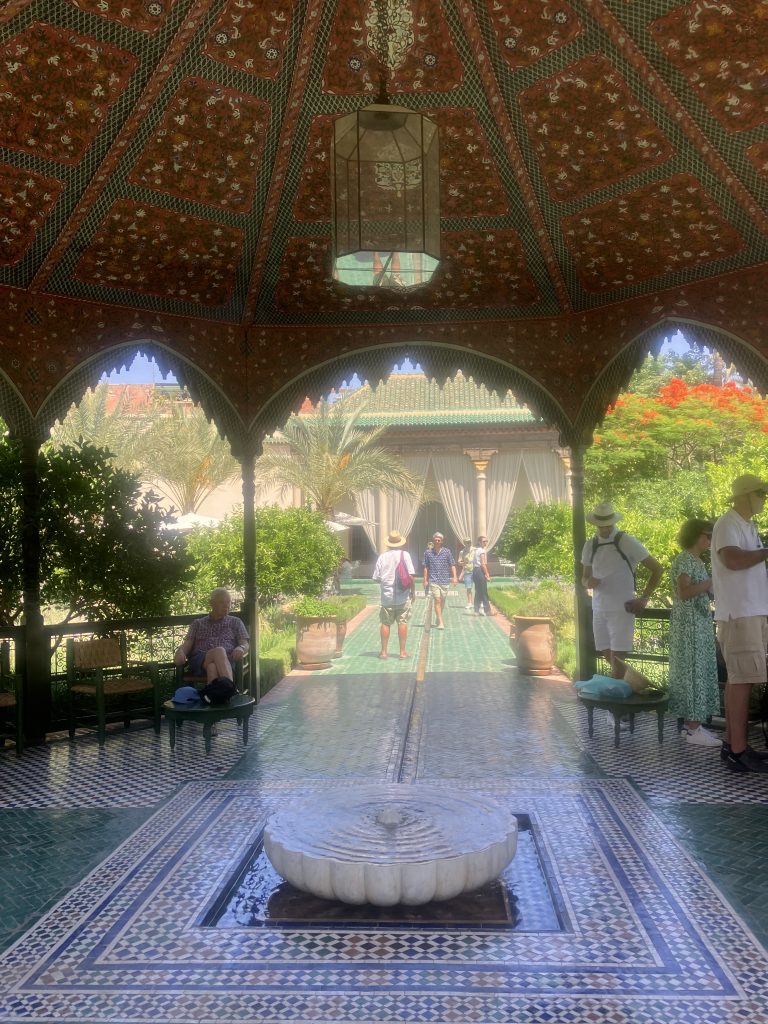
For meals we tried both ends of eating…..one night we had dinner at the amazing Nomad which features modern interpretations of Moroccan cuisine (unfortunately you won’t see a single local dining there, only working). We also ate one night at one of the dozens of skewer grills (that’s what I’ll call it) in the main square of Jemma el-Fnaa. This square sees thousands of people flock to it every night; from tourists looking for snake charmers, to locals enjoying a social night after sunset, or those out to shop for spices or fresh juice (with alcohol severely limited in the country due to Islamic tradition, fresh juice is very, very popular, with stands everywhere you look).
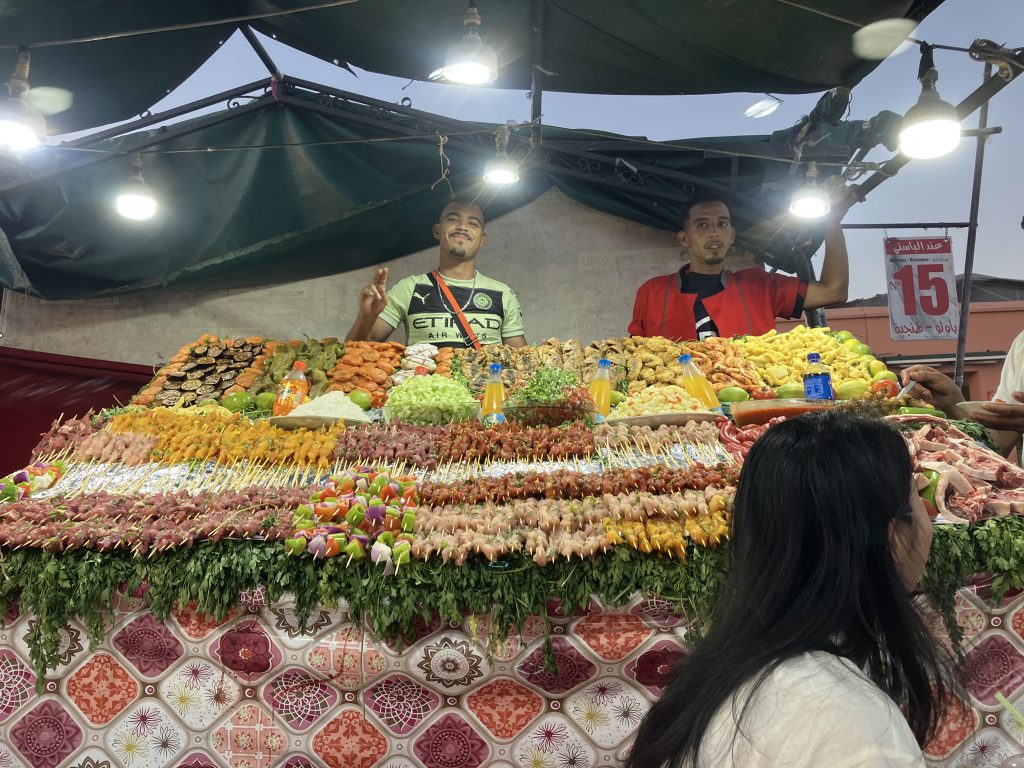
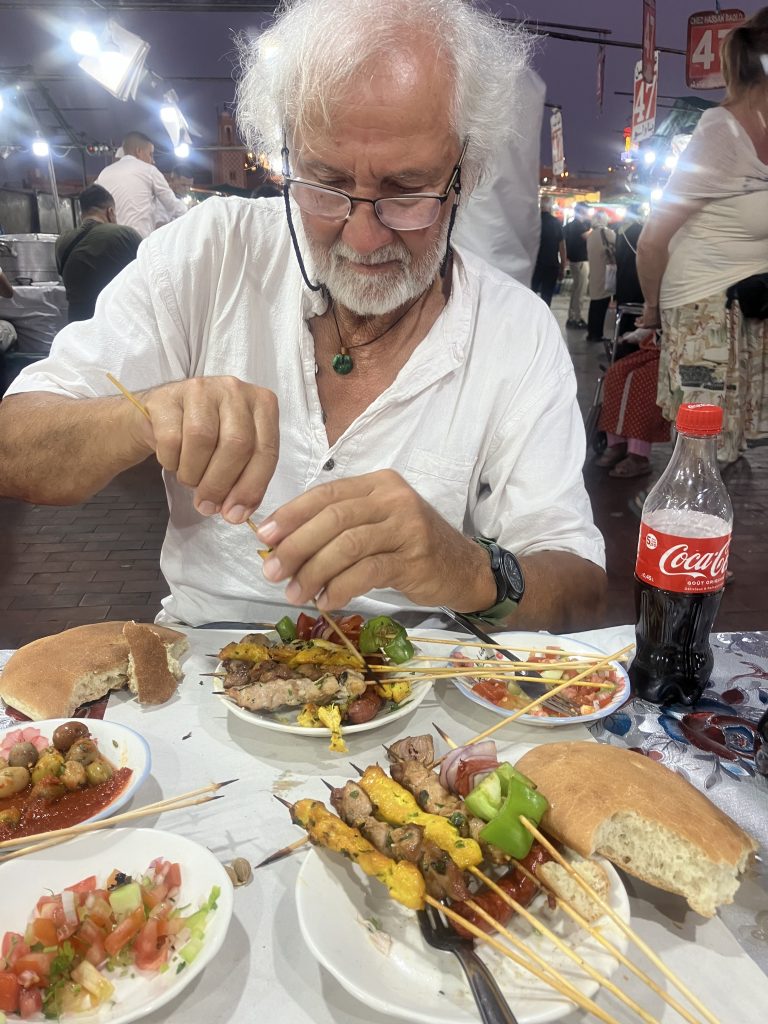
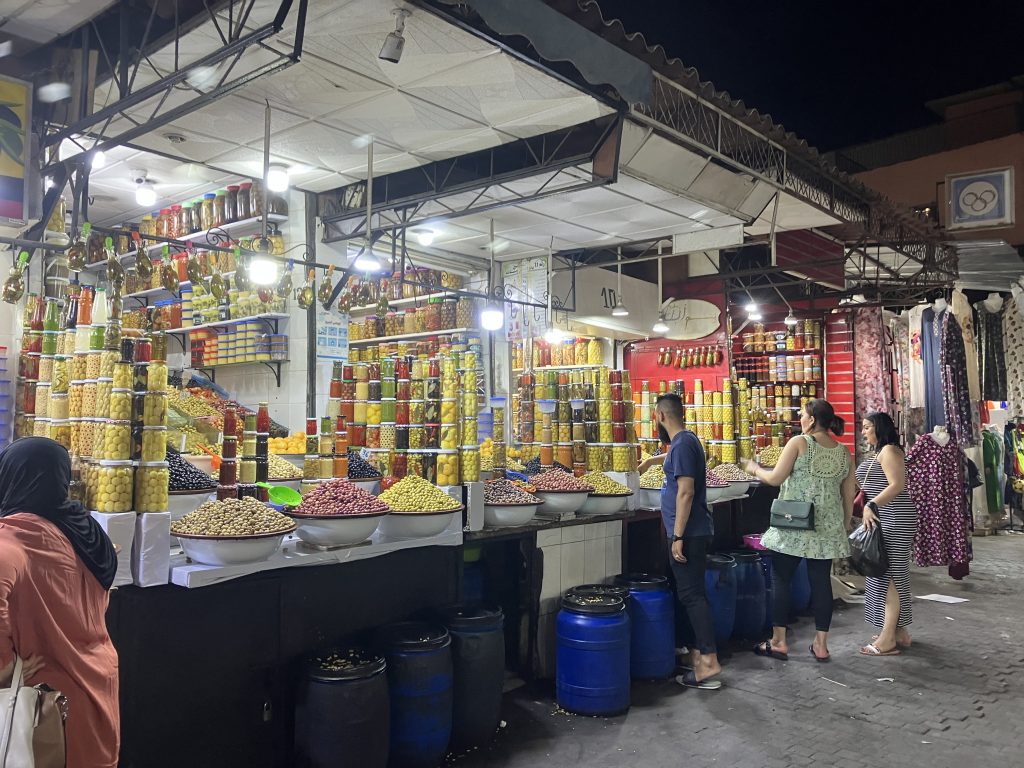
Our final morning was spent in Gueliz (the modern part of town). The name comes from ‘les eglises’ (the churches) as this neighborhood was built by the French who brought their own religion to the country.
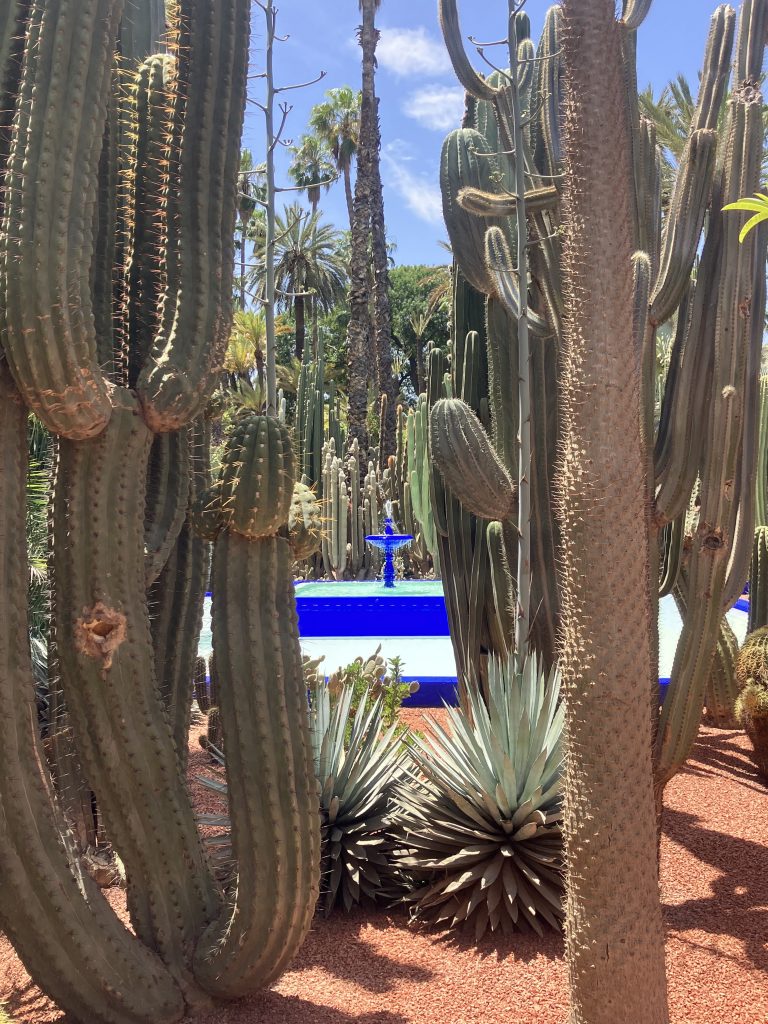
Le Jardin Marjorelle and the Yves Saint Laurent museum was a decadent way to spend our last day in Marrakech. The designer adored the country. He spent much of the year at his home there over the decades, absorbing inspiration for much of his work. He and his partner bought the garden property and completely transformed it into a thing of beauty. Part of the garden now houses a museum dedicated to the jewelry and costumes of the Berber tribes from the high Atlas Mountains (unfortunately photography not permitted).
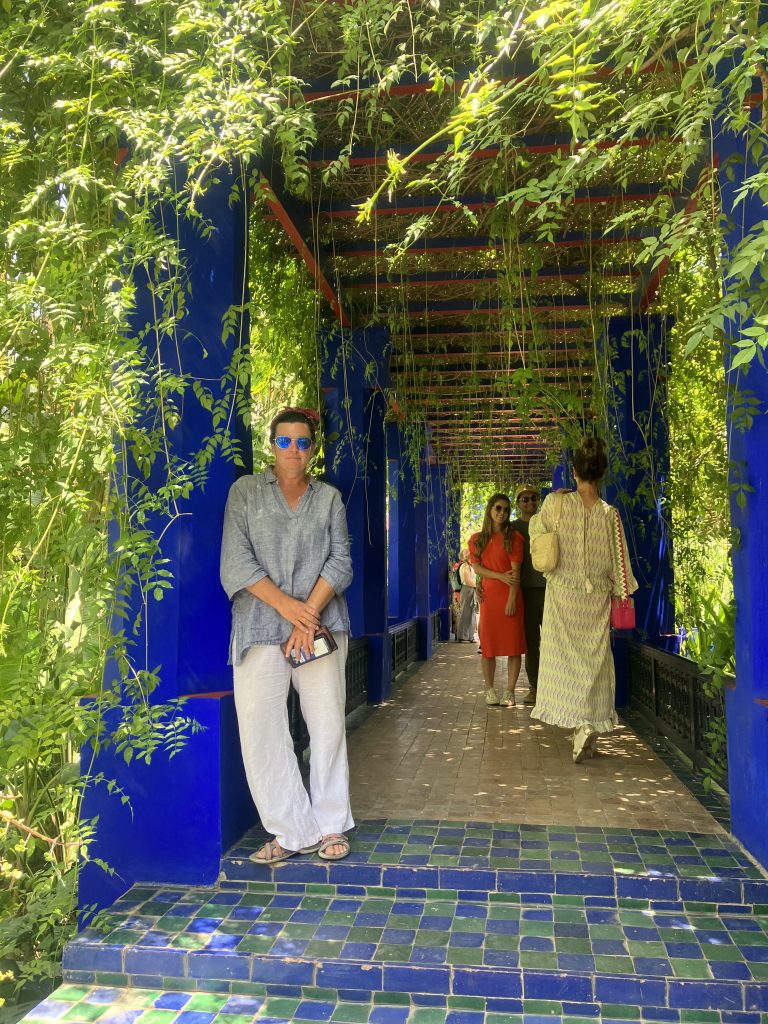
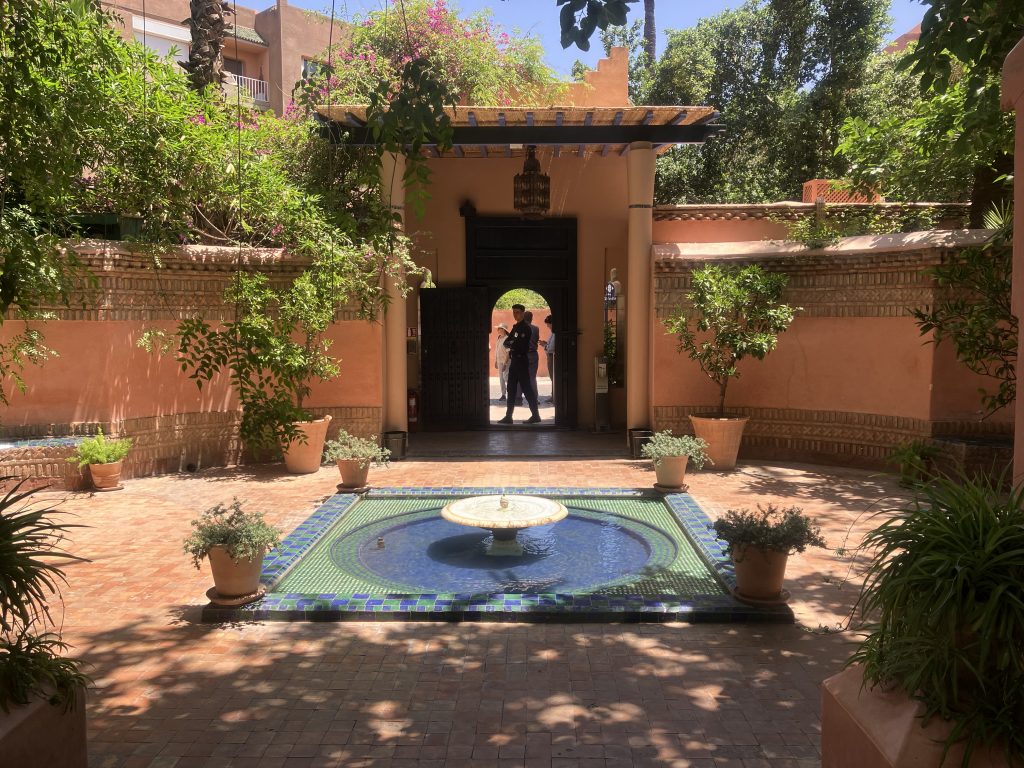
If I have one complaint of Marrakech, it was the number of influencers and Instagramers that fill this city. Everywhere you turn there is a beautiful photo op, but it is sad to see the lack of interest in the people, their culture or their history by white people from Europe and North America. Ok, rant done. Leaving you with mint tea.
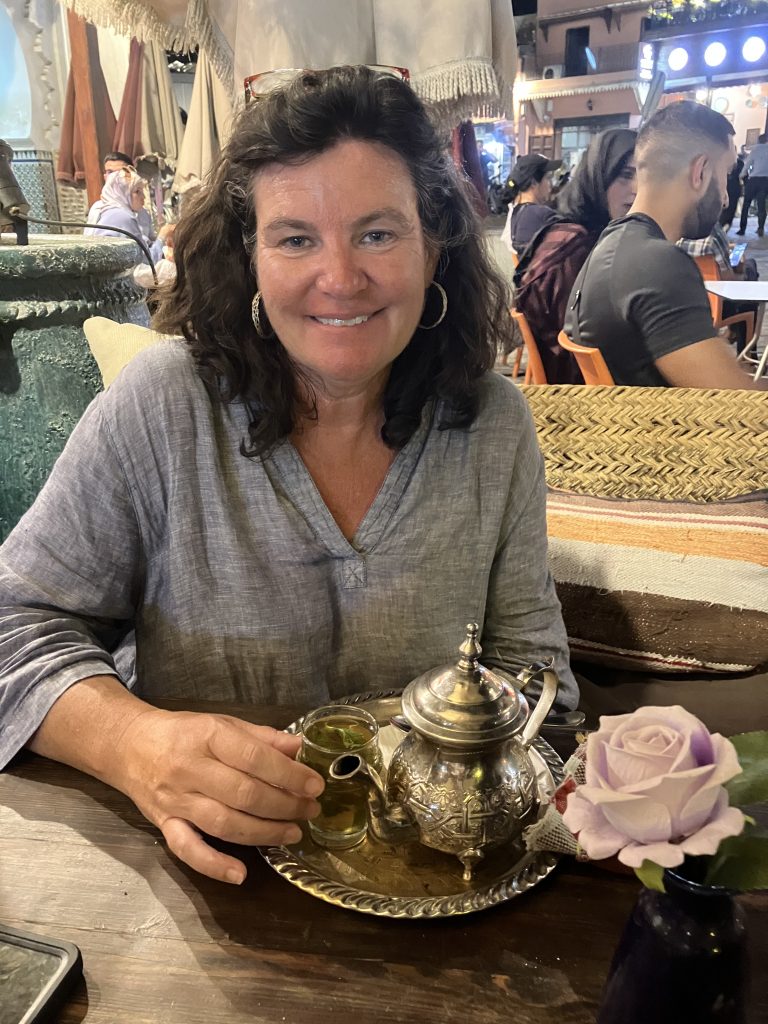

Recent Comments